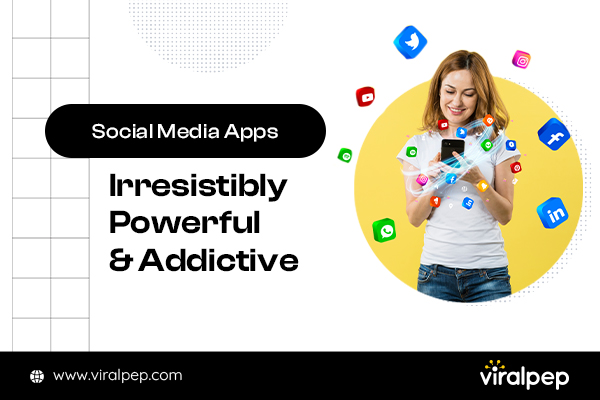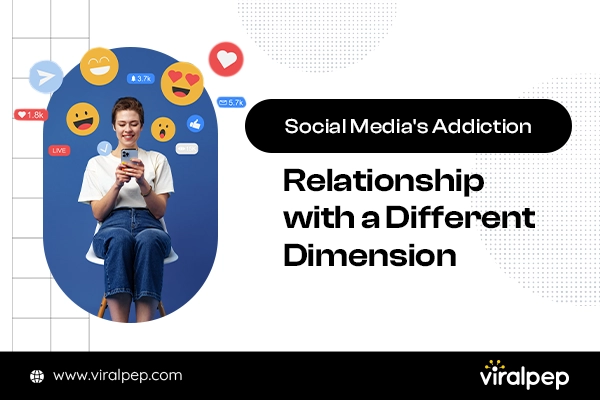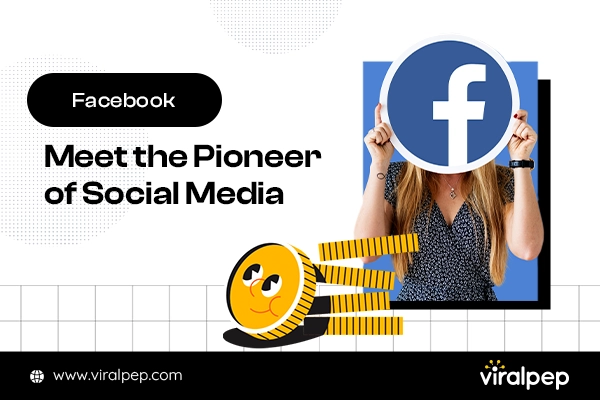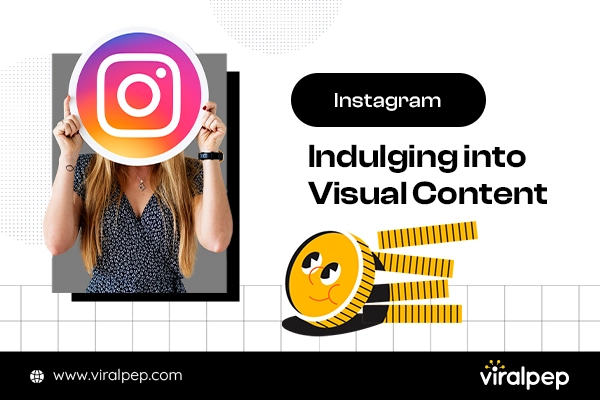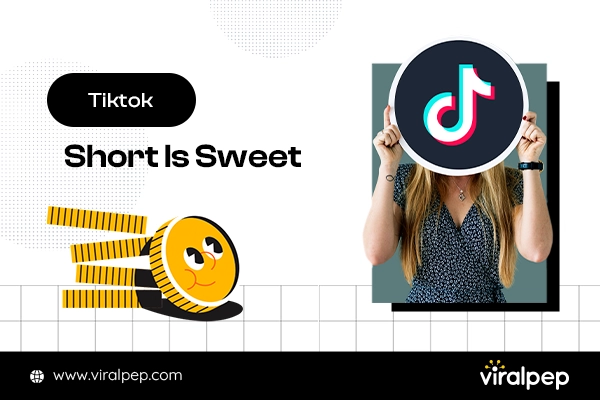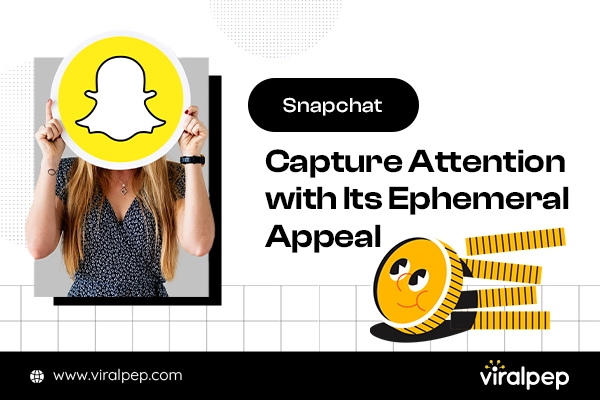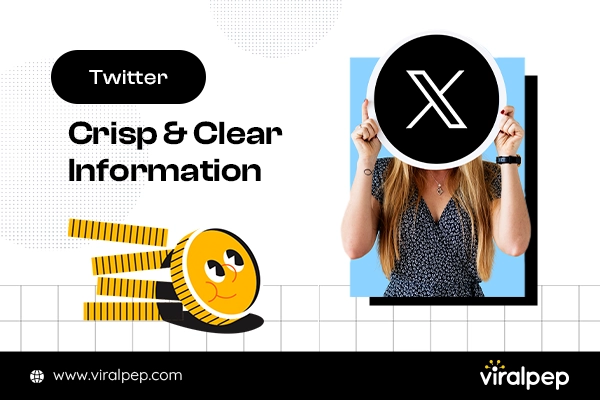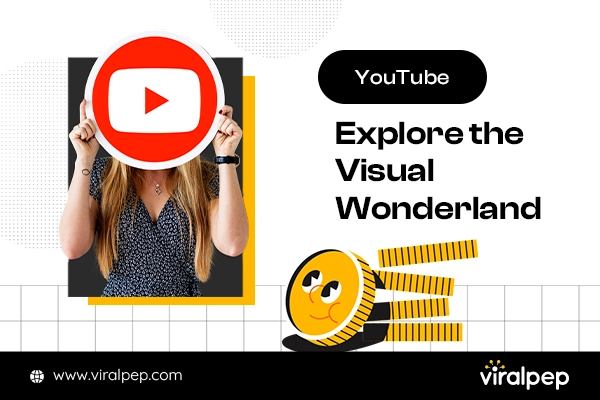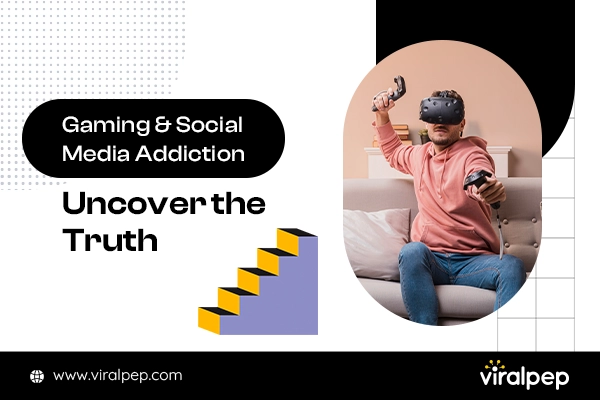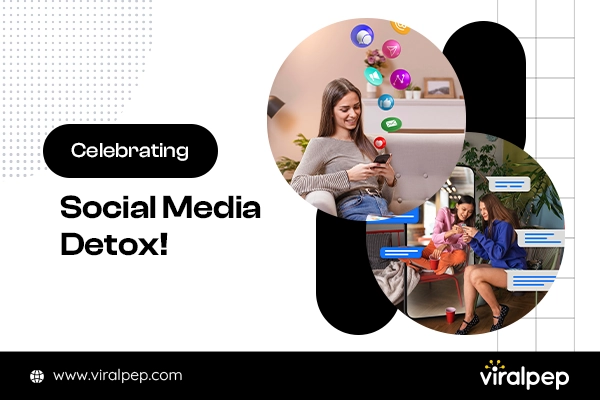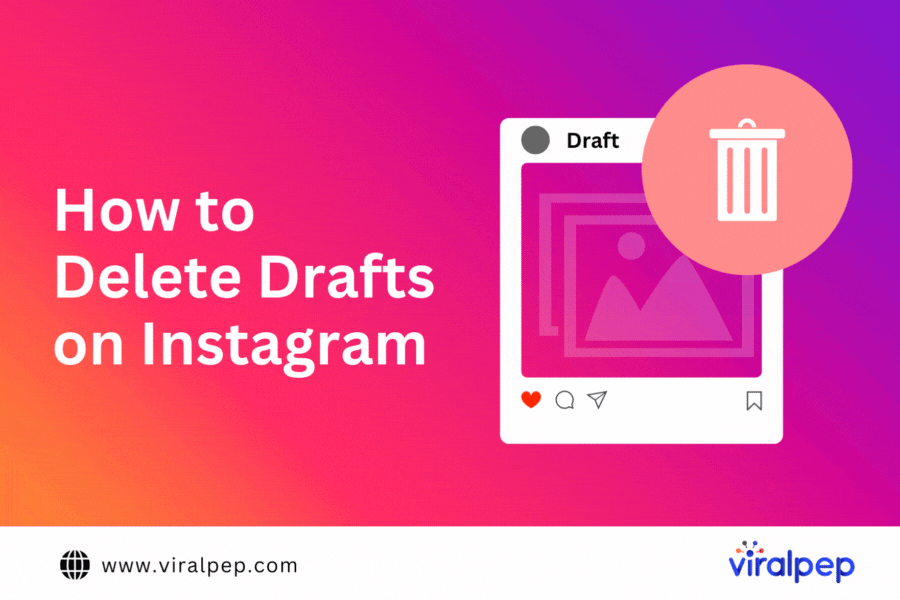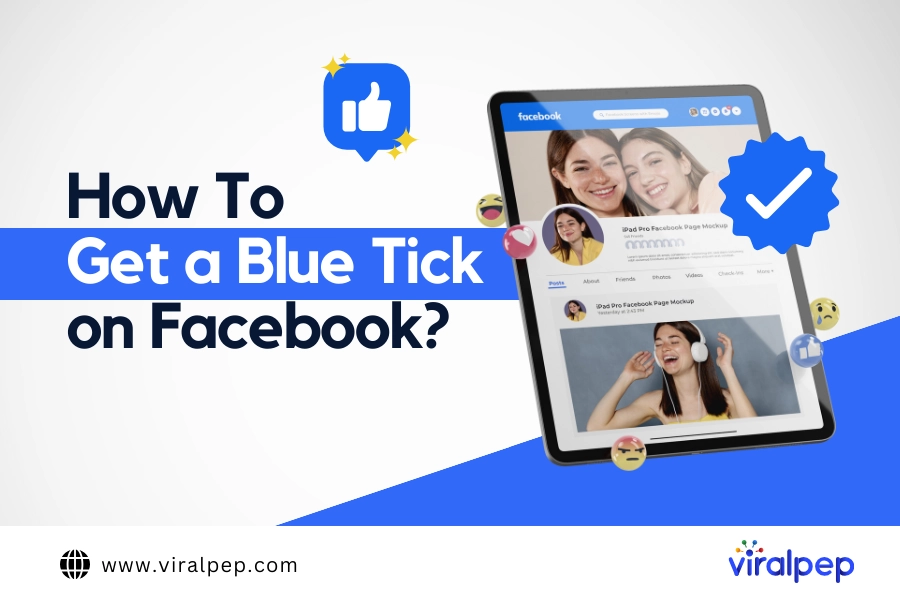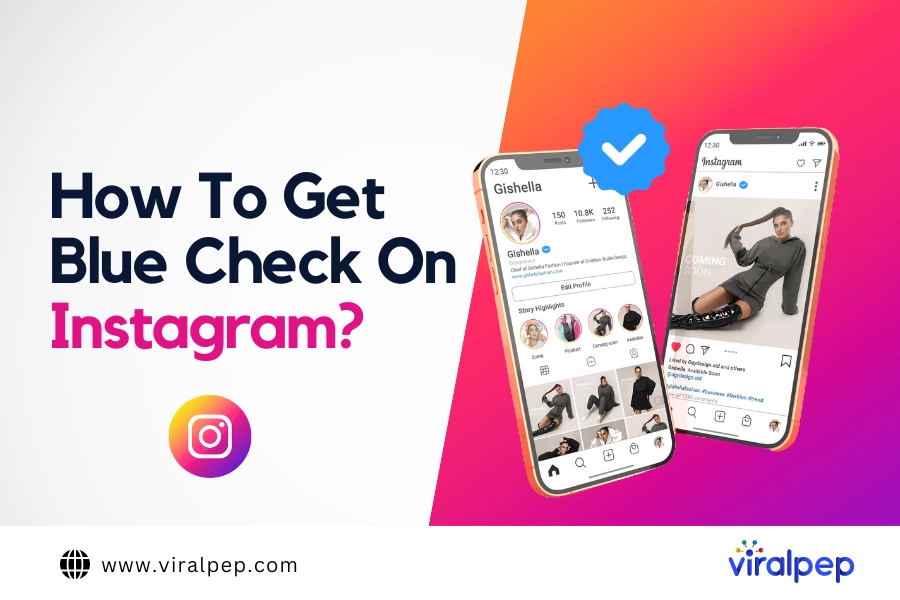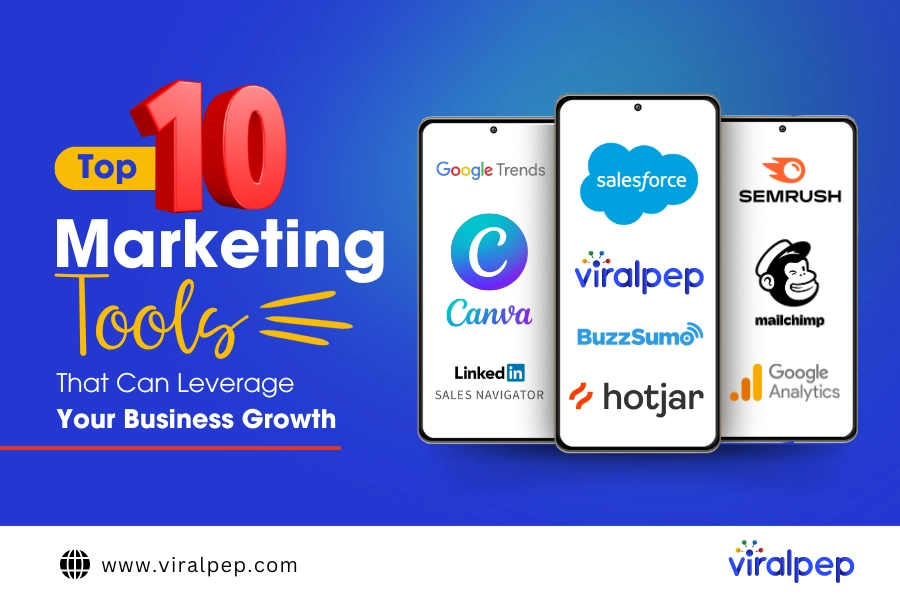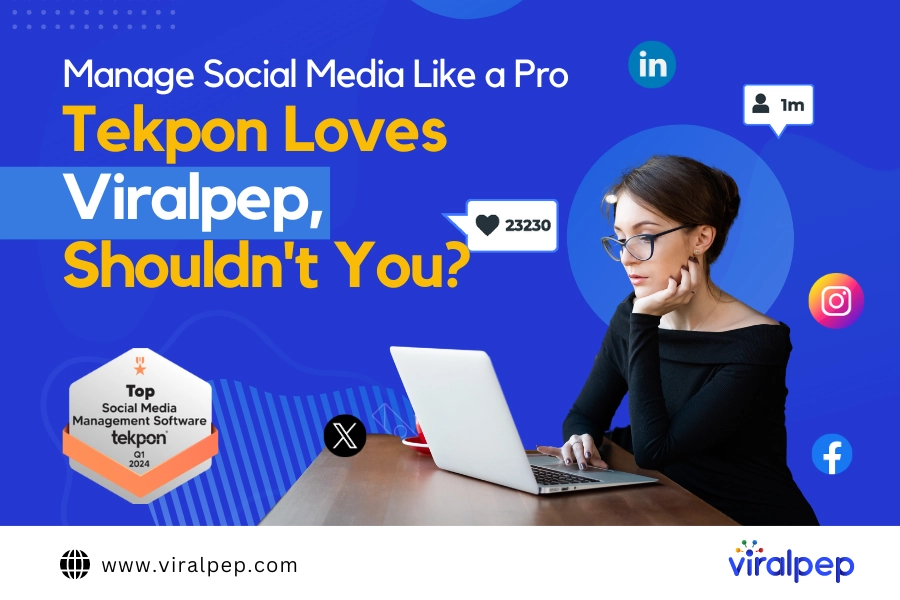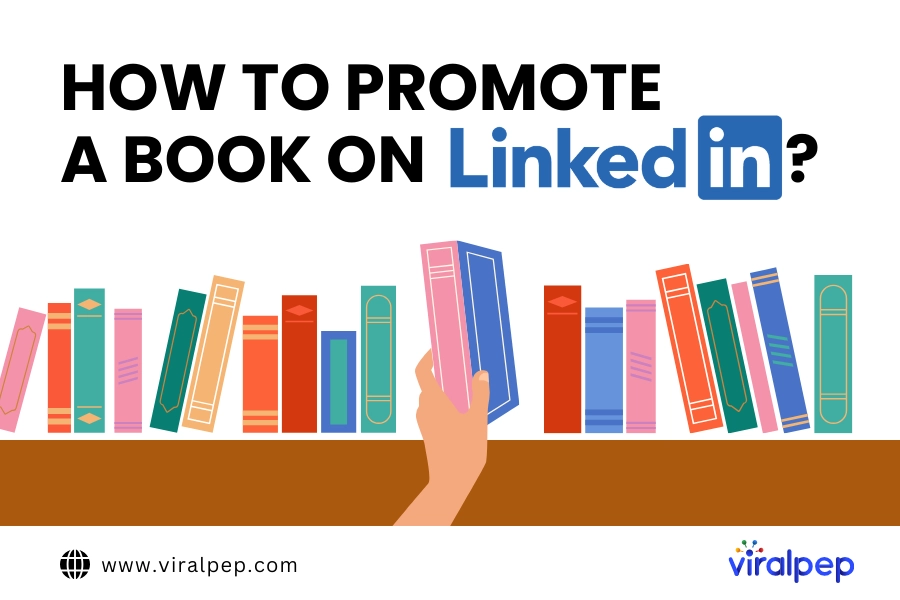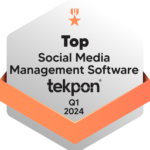Social media has become integral to modern society, captivating millions of users worldwide. Its allure and impact are undeniable, with platforms constantly vying for our attention and consuming a significant portion of our daily lives. As we immerse ourselves in the digital realm, it becomes crucial to recognize the addictive behaviors associated with social media usage and understand their profound effects on our well-being.
In this blog, we will unveil the most addictive social media app and delve into the fascinating world of digital engagement. We will explore the psychological factors that contribute to the addictive pull of these platforms, shedding light on the mechanisms that keep users glued to their screens. Furthermore, we will examine the impact of excessive social media usage on mental health and provide insights into responsible use.
Throughout this journey, we will navigate the digital landscape with a critical eye, aiming to understand the allure while maintaining a healthy relationship with social media. Let’ explore addictive social media, its impact, and the importance of responsible digital engagement.
Addiction and Social Media: A Complex Relationship
Social media has become an integral part of our lives in today’ digital age. We rely on platforms like Facebook, Instagram, and Twitter for communication, entertainment, and staying updated with the world. However, there is growing concern about the addictive nature of social media and its impact on our well-being.
In this blog, we will explore the complex relationship between addiction and social media, shedding light on the defining characteristics of addiction and the psychological and neurological factors that contribute to addictive behaviors.
Defining addiction in the context of social media
When we think of addiction, we often associate it with substance abuse. However, addiction takes on a different form in social media, known as behavioral addiction. It refers to the compulsive and excessive use of social media platforms, resulting in negative consequences on one’ mental, emotional, and even physical health.
The defining characteristics of addiction, such as loss of control, withdrawal symptoms, and negative impact on daily life, can manifest in social media usage.
Exploring the psychological and neurological factors contributing to addictive behavior
Several psychological and neurological factors contribute to addictive behaviors on social media. One key factor is social validation. We are wired to seek approval and verification from others, and social media provides a platform where we can receive instant feedback in the form of likes, comments, and shares.
This constant validation can reinforce addictive behaviors as individuals seek to maintain a sense of acceptance and social connectedness.
Another significant factor is dopamine release. Dopamine is a neurotransmitter associated with pleasure and reward. When we receive social media notifications, likes, or positive feedback, our brain releases dopamine, creating a sense of happiness and reinforcing behavior. This neurological mechanism can contribute to repetitive and compulsive social media usage.
Understanding the role of social validation, dopamine release, and fear of missing out (FOMO)
Social validation plays a crucial role in addictive behaviors on social media. The desire to be liked, accepted, and acknowledged by others drives us to continuously seek confirmation through our posts, photos, and updates. This need for social validation can become addictive, as individuals may develop a constant need for attention and approval from their online peers.
Dopamine release further fuels addictive behaviors on social media. Each notification, like, or comment triggers a dopamine release, creating a reward loop that keeps us engaged and returning for more. The anticipation of receiving these rewards and the pleasure derived from them can make social media usage addictive and difficult to resist.
Additionally, the fear of missing out (FOMO) plays a significant role in social media addiction. Seeing others’ experiences and activities on social media can evoke a fear of being left out or not being part of the social scene. This fear drives individuals to check their feeds and stay connected constantly, afraid that they might miss something important or exciting.
By understanding these psychological and neurological factors, we can begin to comprehend the complex relationship between addiction and social media. Recognizing the impact of social validation, dopamine release, and FOMO on our behaviors and overall well-being is essential.
Facebook: The Pioneering Social Media Platform
Facebook, the pioneering social media platform, has revolutionized the way we connect, share, and interact with others online. With its user-friendly interface and expansive features, Facebook has garnered billions of users worldwide. However, along with its widespread popularity, there are concerns about the addictive nature of the platform. In this section, we will examine the addictive features of Facebook and their impact on users.
Examining Facebook’ addictive features
Facebook is designed to keep users engaged and coming back for more. One of its most addictive features is the endless scrolling news feed. The infinite stream of updates, posts, and content can captivate users, leading to hours of mindless scrolling and consumption. This continuous flow of information can make it difficult to disengage and can contribute to addictive behaviors.
The impact of likes, comments, and shares
One of the driving forces behind Facebook addiction is the desire for social validation. Likes, comments, and shares serve as feedback and affirmation. When we receive positive interactions on our posts, it boosts our self-esteem and sense of social acceptance. This validation can become addictive as individuals seek constant engagement and recognition from online connections.
The addictive nature of Facebook groups and event notifications
Facebook groups provide a sense of community and belonging, which can be highly engaging and addictive. Being part of a group with shared interests or hobbies can lead to a continuous desire to participate, contribute, and stay up to date with the group’ activities.
Additionally, event notifications on Facebook can create a fear of missing out (FOMO) and a sense of urgency to join and attend various events, further contributing to addictive behaviors.
It’ important to recognize the addictive nature of these features and understand their impact on our well-being. While Facebook offers numerous benefits regarding connection and information sharing, it’ crucial to strike a balance and maintain control over our usage.
Instagram: The Visual Temptation
Instagram, a platform known for its visually-driven content, has captivated millions of users with its stunning images and engaging features. However, behind its allure lies the potential for addictive behaviors. This section will explore Instagram’ addictive elements and their impact on users.
Analyzing Instagram’ addictive elements
Instagram’ appeal lies in its emphasis on aesthetically pleasing visuals. The carefully curated feeds, beautiful filters, and creative photography can be captivating, leading users to spend significant time scrolling through endless streams of eye-catching images. The visually stimulating nature of the platform can make it addictive, as users constantly seek out new content to admire and engage with.
The Role of Likes, Followers, and Influencers
Likes and followers play a significant role in creating addictive behavior on Instagram. The validation and social acceptance derived from receiving likes and gaining followers can become addictive as users seek constant affirmation and attention from their online peers.
Additionally, the influence of Instagram influencers and their carefully curated lifestyles can contribute to the addictive nature of the platform, as users strive to emulate these idealized images of success and beauty.
The psychological effects of comparison
Instagram’ abundance of idealized images can have psychological effects on users. Constant exposure to seemingly perfect lifestyles, bodies, and experiences can lead to feelings of inadequacy, low self-esteem, and an urge to compare oneself to others.
The relentless pursuit of obtaining the same level of perfection showcased on Instagram can drive addictive behaviors as users seek to measure up to the idealized images they encounter.
It is important to recognize and navigate these addictive elements mindfully to maintain a healthy relationship with Instagram. In the following sections of this blog, we will explore strategies for managing Instagram usage responsibly and fostering a positive digital experience.
We will discuss tips for practicing self-care, setting boundaries, and promoting authentic connections on the platform. Stay tuned to learn how to navigate the visual temptation of Instagram while preserving your well-being.
TikTok: The Power of Short-Form Content
TikTok, the popular video-sharing platform, has taken the digital world by storm with its addictive and entertaining nature. With its algorithm-driven endless scrolling and bite-sized videos, TikTok has become a powerhouse of addictive content. In this section, we will delve into the addictive aspects of TikTok and its impact on users.
Exploring TikTok’ addictive aspects
TikTok’ algorithm is designed to keep users engaged and hooked. The endless scrolling feature, driven by personalized recommendations, makes getting lost in a never-ending content stream easy. Users are exposed to various short videos with each swipe, from comedy sketches and dance challenges to DIY tutorials and viral trends.
This addictive browsing experience can lead users to spend hours on the platform, engrossed in the captivating content.
The quick, engaging nature of bite-sized videos
TikTok’ format of short, bite-sized videos is inherently addictive. These concise and attention-grabbing videos provide a quick entertainment fix, perfectly suited for our fast-paced digital lives. The instant gratification of consuming one video after another releases dopamine in our brains, creating a pleasurable and addictive experience.
TikTok challenges and trends
TikTok’ challenges and trends have become major drivers of addictive participation. Users are constantly exposed to new challenges and trends, and the desire to be part of the latest viral sensation can be compelling. Participating in these challenges fosters a sense of community and allows users to showcase their creativity and gain recognition from their peers.
While TikTok offers a fun and engaging experience, it is important to be mindful of the addictive nature of the platform. Setting boundaries and practicing responsible usage can help maintain a healthy relationship with TikTok.
Snapchat: The Ephemeral Appeal
Snapchat, the popular multimedia messaging app, has captured the attention of millions with its unique and addictive features. From disappearing messages to Stories that vanish after 24 hours, Snapchat offers a distinct experience that taps into the ephemeral nature of digital communication. In this section, we will explore the addictive aspects of Snapchat and its impact on users.
Examining Snapchat’ addictive features
Snapchat’ disappearing messages and Stories create a sense of urgency and exclusivity. The fleeting nature of the content encourages users to engage with it immediately, fearing they might miss out on something important or entertaining. This addictive aspect keeps users constantly checking their phones for new updates and messages.
The fear of missing out (FOMO) and the constant need to stay connected
Snapchat’ real-time and in-the-moment nature can trigger the fear of missing out (FOMO). Users may feel compelled to stay connected and engaged to avoid feeling left out of conversations, events, or shared experiences. This fear drives addictive behaviors as individuals strive to maintain their social presence and stay in the loop.
The addictive allure of streaks
Snapchat streaks, which represent consecutive days of exchanging snaps with a friend, can create an addictive sense of commitment and competitiveness. Users may feel compelled to maintain their streaks, fearing that breaking them will result in disappointment or a loss of social connection. This pressure to keep streaks alive can contribute to addictive usage patterns on the platform.
It’ important to be aware of these addictive features and their potential impact on our well-being. Setting boundaries, practicing digital detoxes, and prioritizing real-life connections can help mitigate the addictive nature of Snapchat.
Twitter: The Real-Time Information Overload
Twitter, the popular microblogging platform, offers a unique and addictive experience driven by its real-time nature and concise format. With its rapid-fire tweets and a constant stream of information, Twitter can become an addictive platform for users. In this section, we will explore the addictive qualities of Twitter and their impact on users.
Analyzing Twitter’ addictive qualities
Twitter’ fast-paced, real-time nature is key to its addictive appeal. The platform provides constant information, news updates, and conversations that can be difficult to keep up with. The need to stay informed and not miss out on the latest happenings can drive users to spend significant time scrolling through their Twitter feeds.
The dopamine rush from retweets likes, and the viral potential of tweets
Twitter’ engagement metrics, such as retweets and likes, can trigger a dopamine rush, creating a sense of user validation and reward. The desire to gain more retweets, likes, and followers can become addictive as individuals seek social validation and recognition through their tweets.
Additionally, the potential for a tweet to go viral and reach a large audience adds an element of excitement and drives users to engage with the platform continually.
The addictive pull of engaging in debates, discussions, and trending topics
Twitter’ platform encourages public conversations, debates, and discussions. The addictive pull lies in the desire to contribute, share opinions, and engage with others. The allure of being part of trending topics, hashtags, and viral conversations can lead to addictive behaviors as users seek to stay relevant and participate in the ongoing discourse.
It’ essential to approach Twitter mindfully and establish healthy boundaries to prevent information overload and maintain a balanced digital experience.
YouTube: The Rabbit Hole of Video Content
YouTube, the world’ largest video-sharing platform, has captivated audiences with its vast library of content and addictive features. With its autoplay function and personalized recommendations, YouTube can lead users down a rabbit hole of video consumption. In this section, we will delve into the addictive elements of YouTube and their impact on users.
Exploring YouTube’ addictive elements
YouTube’ autoplay feature automatically plays suggested videos based on a user’ viewing history and preferences. This seamless transition from one video to another can create a continuous loop of content consumption, making it easy to get lost in a seemingly endless stream of videos. The allure of discovering new and interesting content fuels the addictive nature of YouTube.
The allure of binge-watching
YouTube’ extensive library of videos, ranging from entertainment and educational content to vlogs and tutorials, makes it an ideal platform for binge-watching. The ability to indulge in hours of diverse content tailored to individual interests provides a sense of gratification and escapism. The instant availability of engaging videos and the desire to explore further contribute to the addictive pull of YouTube.
The addictive appeal of content creators
YouTube’ platform is home to many talented content creators who have amassed dedicated fan communities. The personal connection and engagement with these creators can be addictive as users become invested in their videos, personalities, and ongoing series. The sense of belonging to a community and the opportunity to interact with favorite creators fosters a strong attachment to the platform.
While YouTube offers an abundance of entertainment and educational value, it’ important to maintain a healthy relationship with the platform. Setting limits on viewing time, diversifying content consumption, and balancing offline activities help prevent excessive reliance on YouTube.
Gaming and Social Media Integration: Unveiling the Addictive Connection
The intersection of gaming and social media has created a powerful and addictive synergy, captivating players worldwide. In this section, we will explore the addictive nature of social media integration within gaming platforms and its impact on users.
Investigating the addictive nature of social media integration
Gaming platforms have seamlessly integrated social media features, allowing players to connect, share, and compete with friends and online communities. The instant access to social media within gaming environments creates a continuous loop of engagement, blurring the boundaries between gaming and social networking.
The addictive pull lies in the desire for social validation, the need to showcase achievements, and the fear of missing out (FOMO) on gaming-related conversations.
The impact of in-game rewards, leaderboards, and social interactions
In-game rewards, such as achievements, virtual currency, and unlockable content, fuel addictive behavior by providing a sense of accomplishment and progression. Leaderboards and competitive rankings intensify the addictive nature of gaming as players strive to climb the social ladder and outperform their peers.
Social interactions, such as in-game chats, guilds, and multiplayer features, enhance the social experience and foster community, contributing to the addictive appeal.
The phenomenon of “game socialization” and its impact on overall social media addiction
“Game socialization” refers to the phenomenon where gaming becomes the primary platform for social interactions, surpassing traditional social media channels. The immersive nature of gaming and integrating social features can lead to excessive gaming time and neglect of other social activities.
This can contribute to an overall addiction to social media as the boundaries between gaming and social networking become blurred.
Individuals must be mindful of gaming and social media usage, set healthy boundaries, and maintain a balanced lifestyle. Finding a balance between gaming, social interactions, and offline activities is key to preventing excessive reliance on the addictive nature of gaming and social media integration.
Coping with Social Media Addiction: Regaining Control of Your Digital Life
Social media has become integral to our daily lives in today’ hyper-connected world. However, excessive use of social media can lead to addiction, negatively impacting our mental and emotional well-being. This section will explore coping strategies for social media addiction, empowering you to regain control of your digital life.
Recognizing the signs of social media addiction and its potential consequences
It’ important to know the signs of social media addiction. These may include constantly checking social media platforms, feeling anxious or irritable when unable to access social media, neglecting real-life responsibilities, and experiencing a decline in mental health. Recognizing potential consequences, such as reduced productivity, strained relationships, and decreased self-esteem, can motivate you to act.
Strategies for reducing social media usage and establishing healthier digital habits
Reducing social media usage requires conscious effort and self-discipline. Start by setting goals and designating social media-free periods. Use app blockers or screen time tracking tools to monitor and control your usage. Engage in alternative activities such as hobbies, exercise, and spending quality time with loved ones.
The importance of setting boundaries, practicing self-care, and seeking support when needed
Establishing clear boundaries is essential in managing social media addiction. Define specific times and situations when you will refrain from using social media, such as during meals or before bedtime. Practice self-care by prioritizing activities that nourish your physical, mental, and emotional well-being by practicing mindfulness, exercising regularly, and fostering face-to-face social connections.
If needed, seek support from trusted friends, family members, or professional counselors who can provide guidance and encouragement throughout your journey.
Remember, coping with social media addiction is a personal process, and everyone’ path to recovery will be unique. Be patient with yourself and celebrate small victories along the way. By taking proactive steps to reduce social media usage and prioritize your overall well-being, you can reclaim control of your digital life and cultivate a healthier relationship with social media.
Conclusion
In conclusion, social media addiction is pervasive in today’ digital age. The allure of constant connection, validation, and entertainment can lead to excessive usage and negative consequences on our well-being. However, by recognizing the signs of addiction, implementing strategies for healthier digital habits, and seeking support, we can regain control and establish a more beneficial relationship with social media.
It is essential to be mindful of the impact of social media on our mental health, self-esteem, and overall quality of life. Setting boundaries and practicing self-care is crucial to reducing excessive social media usage. By setting specific goals, limiting screen time, and engaging in alternative activities, we can break free from the addictive pull of social media and find fulfillment in offline experiences.
Remember, seeking support is not a sign of weakness but a courageous step toward healing. Whether confiding in trusted friends and family or seeking guidance from professional counselors, support systems can provide valuable insights, accountability, and encouragement on our journey to overcome social media addiction.
As we navigate the digital landscape, it’ important to remember that social media can be a powerful tool when used mindfully and in moderation. By harnessing its positive aspects, such as staying connected with loved ones, sharing meaningful content, and seeking inspiration, we can create a balanced approach to social media usage.
Ultimately, our well-being should always be the priority.
Cultivating a healthy relationship with social media involves:
- Constant self-reflection.
- Adaptability to evolving trends.
- The courage to make conscious choices that align with our values and goals.
Let us embrace the power of self-awareness, resilience, and self-care as we strive to find harmony in our digital lives. Taking control of social media usage and nurturing our well-being can create a healthier and more fulfilling existence in the digital age.
Thank you for joining us to understand and address social media addiction. May you find the strength and inspiration to navigate the digital world with intention, balance, and joy.
FAQs (Frequently Asked Questions) about social media addiction
What is social media addiction?
Social media addiction is a compulsive and excessive use of social media platforms that interferes with daily functioning, relationships, and overall well-being. It is characterized by an intense preoccupation with social media, difficulty controlling usage, withdrawal symptoms when not using it, and negative consequences in various areas of life.
How can I recognize if I’ addicted to social media?
Some signs of social media addiction include spending excessive time on social media, neglecting other responsibilities and activities, experiencing anxiety or irritability when unable to access social media, difficulty concentrating on tasks, and using social media as a coping mechanism for negative emotions.
What are the potential consequences of social media addiction?
Social media addiction can have several negative consequences, including decreased productivity, strained relationships, poor mental health, sleep disturbances, low self-esteem, and reduced real-life social interactions. It can also contribute to feelings of loneliness, envy, and comparison.
Are certain social media platforms more addictive than others?
While addiction can vary from person to person, some social media platforms are designed to be more engaging and addictive than others. Platforms focusing on endless scrolling, personalized content recommendations, and instant gratification through likes and comments tend to be more addictive. Examples include Facebook, Instagram, TikTok, and Snapchat.
Can social media addiction affect my mental health?
Yes, social media addiction can have a significant impact on mental health. Excessive social media use has increased depression, anxiety, loneliness, and poor self-esteem. The constant exposure to curated images and idealized lifestyles can contribute to feelings of inadequacy and negatively impact mental well-being.
What strategies can I implement to reduce my social media usage?
To reduce social media usage, you can try setting specific time limits for social media, using productivity apps that track and limit screen time, removing social media apps from your phone’ home screen, practicing mindfulness and being present at the moment, engaging in offline activities, and finding alternative ways to connect with others.
How do I establish healthier digital habits and set boundaries with social media?
Setting boundaries with social media involves establishing clear rules for yourself, such as designating specific times or days for social media use, avoiding social media during certain activities (e.g., meals, bedtime), turning off notifications, and creating a physical or digital space free from social media distractions. It’ important to be consistent and hold yourself accountable.
Is it possible to overcome social media addiction without completely disconnecting from social media platforms?
Yes, it is possible to overcome social media addiction without completely disconnecting. It often involves developing a healthier relationship with social media, such as using it consciously and purposefully, setting boundaries, and engaging in activities that promote well-being and real-life connections. Finding a balance that works for you is key.
When should I seek professional help for social media addiction?
If social media addiction significantly impacts your daily life, relationships, and mental health, it may be beneficial to seek professional help. A mental health professional can provide guidance, support, and specialized interventions tailored to your needs, helping you navigate and overcome social media addiction.


